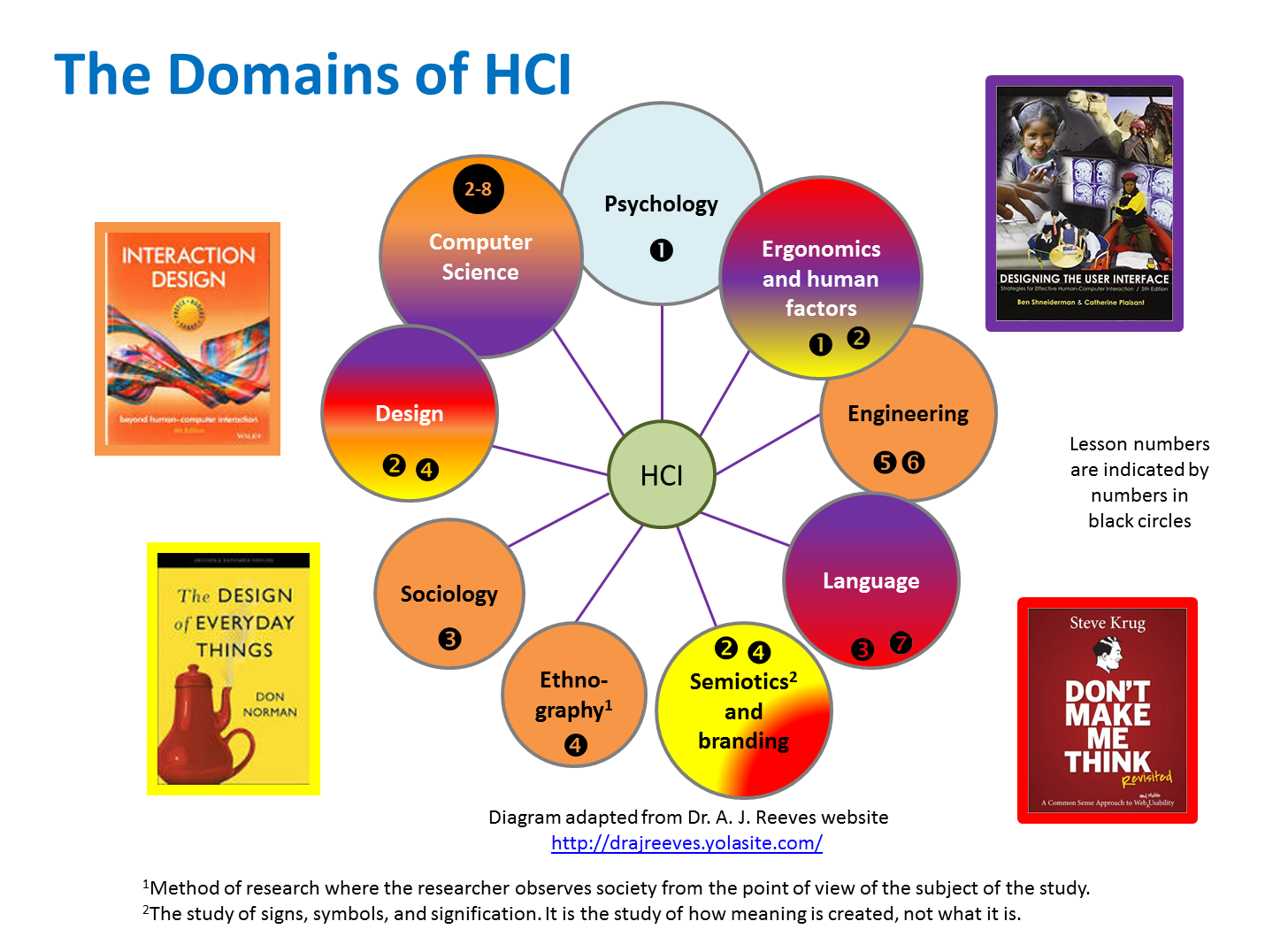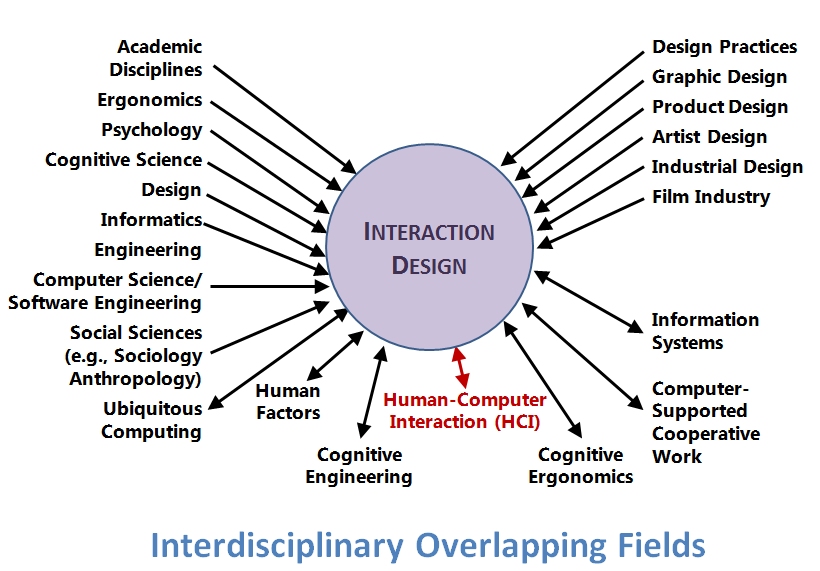As a discipline, it has both tremendous breadth and depth. This course will explore the most salient aspects of this area of research.

Definitions
HCI researcher A. J. Reeves depicted the domain of HCI in a diagram like the one below. I have enhanced the diagram to show how the textbooks correspond to the domain areas (using color coding) and how the lessons of this course correspond to the correspond (using numbers in black circles). Hopefully, this will convey a lot about the course content, concentration and how the textbooks will be used. (If this is not a usable diagram, let's discuss how to improve it! ☺ )

The Association for Computing Machinery (ACM) defines HCI as "a discipline concerned with the design, evaluation and implementation of interactive computing systems for human use and with the study of major phenomena surrounding them."
Shneiderman and Plaisant, authors of "Designing the User Interface" maintain that HCI combines knowledge and methods associated with professionals including:
- Psychologists (incl. Experimental, Educational, Social and Industrial Psychologists)
- Computer Scientists
- Instructional and Graphic Designers
- Technical Writers
- Human Factors and Ergonomics Experts
- Anthropologists and Sociologists
Preece, Rogers and Sharp, authors of "Interaction Design" attempt to make a distinction between HCI and Interaction Design:
We see the main difference between Interaction Design (ID) and Human-Computer Interaction (HCI) as one of scope. ID has cast its net much wider, being concerned with the theory, research, and practice of designing user experiences for all manner of technologies, systems, and products, whereas HCI has traditionally had a narrower focus [see the ACM definition]. pg. 9-10

I respectfully disagree with Preece, et.al. I believe that the design, evaluation and implementation of interactive systems does need to take into account all of the areas above which the authors of Interaction Design try to place outside HCI's domain.
This course
In this class, we will explore design methodologies and principles. We wil critically evaluate all sorts of interfaces including Windows, Internet search engines, mobile devices, web sites, computer games, simulation environments and remote control devices.
We will
- learn stategies for prototyping,
- learn how bootstrapping can build rapid interfaces,
- conduct usability research,
- critically analyze scholarly research,
- get a glimpse into disciplines such as natural language, robotics and information visualization,
- mine recent case studies for insights,
- explore some of the latest technological developments at industry leaders like Google, and
- learn to appreciate the differences and subtleties between good and bad design